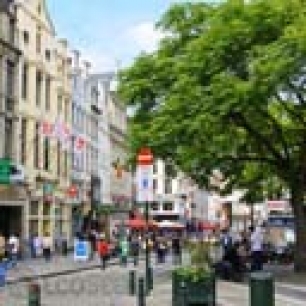More trees for the cities
Many people face the long standing issue of where they would prefer to live—in the country (rural areas), or in the city (urban areas). Considering the notable increase in the population of urban areas, we can presume that most people now prefer to live in cities. Although it may not be a question of preference, but just of necessity. There are more readily available opportunities in cities in terms of employment, as compared to those in rural areas. But for whatever reason, it is undeniable that more and more people are now flocking to the cities in search of—how ironic it may sound—“greener” pastures. As a result of so many people trying to take advantage of employment opportunities and going for career advancement in the urban areas, there is an increased need for residential areas and buildings, as well as for more and wider office spaces, many trees are being cut to give way to more constructions and expansions. The result? Less trees in the cities or sometimes no trees at all. It’s time stakeholders in the urban areas rethink this whole thing, specifically of sacrificing natural greens for construction considerations. Stakeholders include, but are not limited to, those governing the cities or those in public office, those residing and working therein and those who intend to acquire and build more properties in these areas. It is not wrong to be dreaming of a more profitable business or a more lucrative career, nor is it a mistake to go for technological advancement, but hopefully not at the expense of ruining the environment. True, there is a need for more constructed buildings to house new and expanding companies, and likewise new homes to accommodate more residents. But these said stakeholders must see to it that trees are retained, or if inevitable to cut them, that there would be fast growing trees for each zone, in order to reap the following benefits of having green healthy space and trees all around our cities: Trees and green healthy space are known to improve cognitive function. The mind tends to be more creative when relaxed and nurtured. You cannot expect that state of mind when you are always surrounded with the grays and whites and coldness of urban structures. You are better with breathing spaces, in parks and gardens near your homes or offices, to be able to let your mind relax in between hours of taxing work. Mental fatigue is evidently easily lightened up by nature’s beauty, and a breath of fresh air. Easy access to green space is undoubtedly a perfect stress reliever. What better time out would it be from work and house chores than one taken within a green healthy space? That is one great escape. Hopefully one you would not have to travel far for, if urban planners within your area (with your prompting and cooperation no less) will consider integrating green space in prominent city areas. Green space and healthy trees around the city neighborhood will do wonders to combat the harsh effects of global warming. Less floods, not too much warmth, and guaranteed fresh air are more than enough considerations for planning green space within dense city areas. It is time to reconsider urban plans, and necessarily integrate building and maintenance of gardens, green healthy spaces and parks (no matter how small) all around our metropolis. Emily Harper is a busy housewife who finds the time to blog. She worked in marketing but is now keeping her readers up-to-date with the latest in areas of sustainability and the latest in home security technology.
0 comentarios